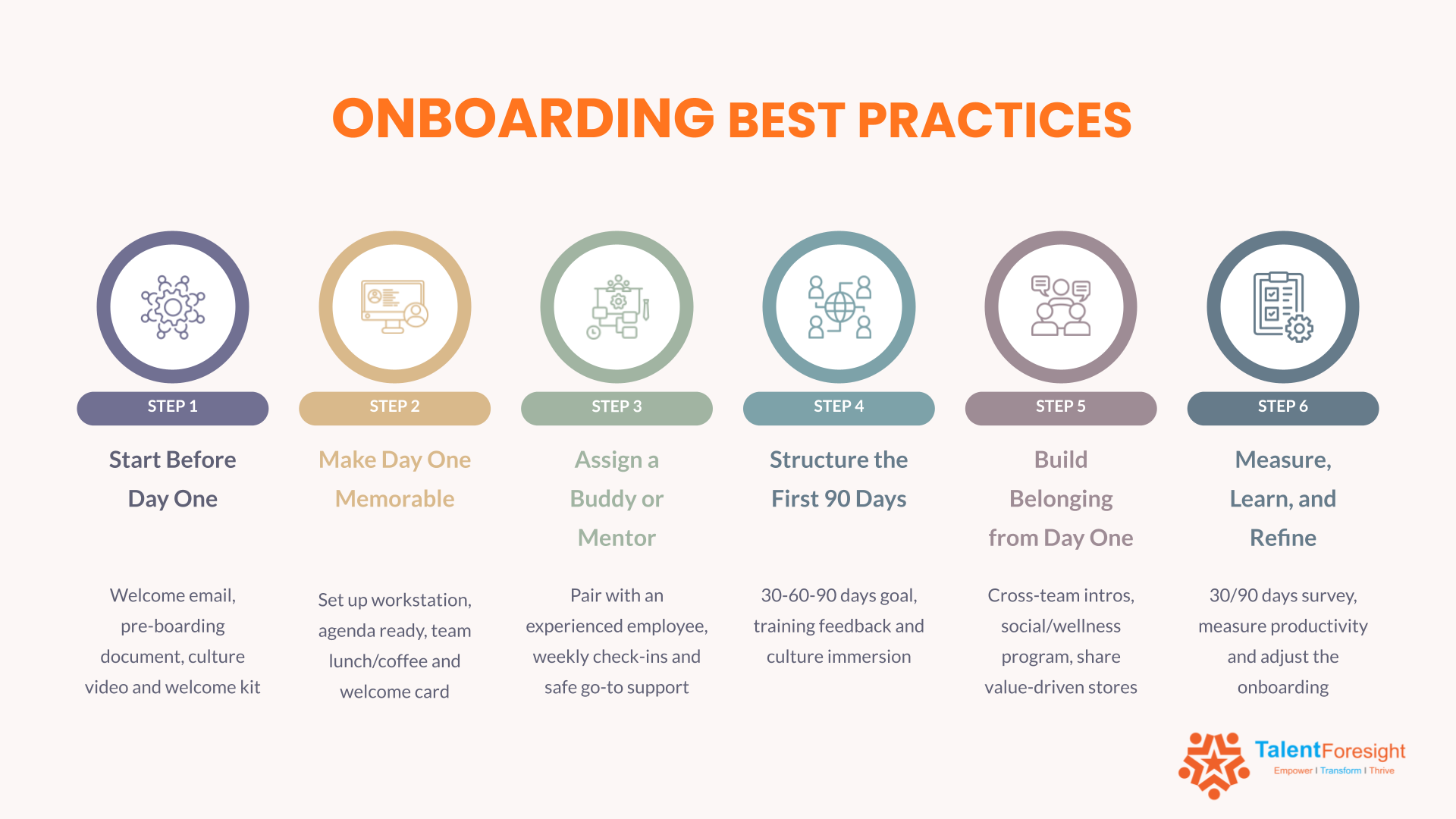Imagine this: It’s a new hire’s very first day. They arrive eager to contribute, but are met with confusion. No one was expecting them, their workstation is bare, and their manager is tied up in meetings. By lunchtime, the enthusiasm that brought them through your doors is already fading.
Now, picture a different scenario. Before Day One, they receive a personalized welcome email. They arrive to find their desk set up, their laptop waiting, and a warm note from the team. A mentor introduces them around, and a clear schedule guides them through the day. By the time they leave, one thought is top of mind: “I made the right decision.”
That is the difference great onboarding makes.
At Talent Foresight, we understand that onboarding is not just about forms and checklists; it’s the first chapter of an employee’s journey with your organization. Done well, it inspires loyalty, accelerates productivity, and strengthens culture. Here are some best practices that leading employers are embracing:

1. Begin Before Day One
Onboarding starts the moment the offer is signed. A structured pre-boarding process reduces anxiety and builds excitement.
- Share a welcome email with team introductions, FAQs, and logistics.
- Provide essential documents in advance.
- Give a glimpse of company culture, such as a short video from leadership.
💡 Consider sending a digital “welcome kit” that includes company values, dress code tips, and a map of the office.
2. Make the First Day Count
Day One sets the tone for the entire journey.
- Ensure IT tools, access badges, and workspaces are ready.
- Schedule a team lunch or coffee to create early connections.
- Provide a structured agenda so the new hire feels guided, not lost.
💡 Even small gestures like a handwritten card from the team can make a lasting impact.
3. Assign a Buddy or Mentor
No one should feel like they’re navigating a new workplace alone.
- Pair each hire with an experienced colleague for informal guidance.
- Encourage weekly check-ins.
- Create a safe space for questions, big or small.
4. Structure the First 90 Days
Research shows that structured onboarding increases retention by 58%.
- Define clear 30, 60, and 90-day goals.
- Provide training not just on systems, but also on culture.
- Hold regular feedback sessions to build trust and alignment.
📌 One of our clients launched a “90-Day Growth Plan” and saw first-year turnover fall by 25%.
5. Build Belonging and Connection
Employees don’t just want a job; they want to feel part of something bigger.
- Facilitate introductions across departments.
- Encourage participation in wellness and social activities.
- Share stories that bring company values to life.
6. Continuously Improve the Experience
Onboarding should evolve with your business.
- Gather feedback at 30 and 90 days.
- Track time-to-productivity.
- Adapt and refine the process to keep it impactful.
Onboarding as a Strategic Advantage
The best organizations treat onboarding as a powerful business lever, not an administrative task. It’s your opportunity to communicate, “Welcome aboard. We are invested in your success.”
At Talent Foresight, we partner with leaders and HR teams to design onboarding processes that not only integrate employees but also inspire commitment and drive performance.
Because in the end, strong onboarding doesn’t just bring people into your company, it makes them want to stay, grow, and thrive.
👉 What onboarding experience, good or bad, has shaped your perspective? And if you lead a team today, what’s one thing you’ll do differently to strengthen your onboarding process?
